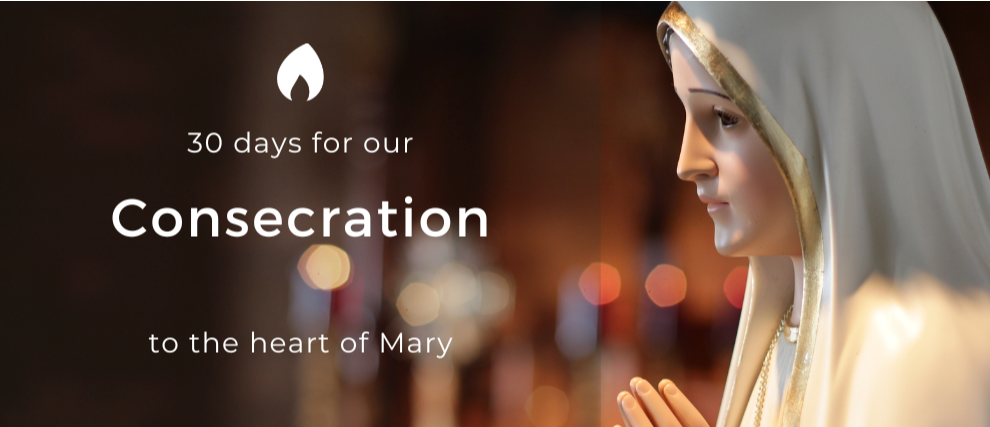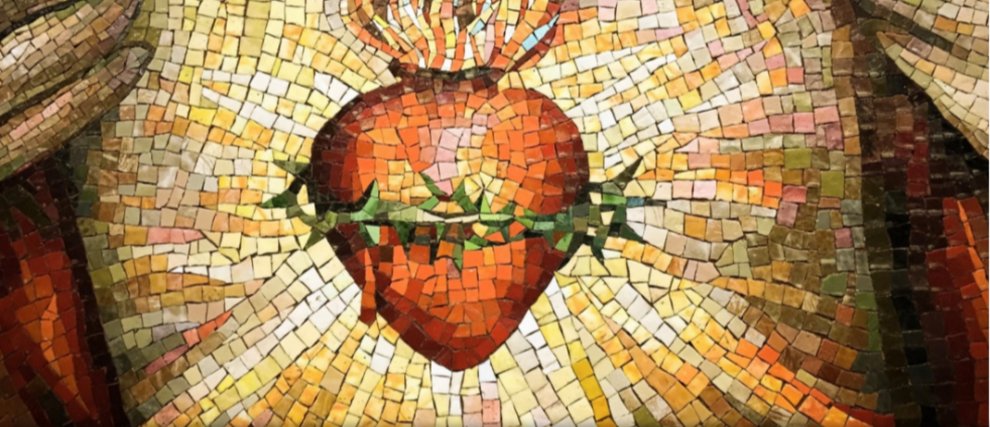Our Lady of Guadalupe
History of the Basilica of Our Lady of Guadalupe in Mexico
Juan Diego was an Aztec peasant born in 1474, who became a Christian thanks to the work of the Franciscan missionaries. He lived in Mexico, near modern-day Mexico City. From December 9th to 12th, 1531, he had five apparitions of the Virgin Mary who came to ask him to build a chapel on the site of the apparitions: the hill of Tepeyac. These are the famous apparitions of Our Lady of Guadalupe. Our Lady gave a sign to help the bishop believe and fulfill her requests: Juan Diego gathered Castile roses on the top of the arid and icy mountain in the middle of winter, all more beautiful and fragrant than the last. He carried them to the bishop who, upset, recognized them as being from his native region. At the same time, as Juan Diego opened his tilma (coat) that contained the flowers, the miraculous image of the Blessed Virgin appeared on it.
Following this, the bishop would execute all the requests of the Blessed Virgin. The image is first placed in the major church of Mexico City, where a multitude of natives flocked, ecstatic, in front of all the signs of their culture printed on the image. Two weeks later, for Christmas, a procession carried the image to the newly built chapel on the hill of Tepeyac. During the procession, the Indigenous people shot arrows in joy, and accidentally, one of them fatally injured a man. The missionaries immediately carried him at the foot of the image of the Virgin so that she could resurrect him, what she did on the spot. This was the first miracle of Our Lady of Guadalupe. Juan Diego settled right next to the chapel, living as a hermit, and for seventeen years, he was the guardian of the miraculous image and received the crowds of pilgrims coming to admire it.
In 1533, the first Marian sanctuary in America was built on the Tepeyac. Baptisms started by the thousands. In the space of eight years, nine million people were baptized. It is one of the most remarkable mass conversions in the history of the Church. A Franciscan father testifies: "There came so many that the ministers, some days, could no longer raise their arms to baptize. Some priests had to baptize thousands of people, men, women and children every day. " The event took on such a magnitude that Pope Paul III issued a proclamation to clarify the way forward, he insisted on the importance of catechizing the natives.
Over the years and with the influx of pilgrims, the shrine of Our Lady of Guadalupe in Mexico City has grown. Today, it is the most visited in the world after the Vatican City, with 20 million pilgrims per year. Our Lady of Guadalupe is the patroness of unborn children. The feast of Our Lady of Guadalupe is December 12th, the anniversary of the miracle of the printing of the image of the Virgin on the tilma of Juan Diego. The image is now in the basilica of Mexico City, pilgrims can pass just below to contemplate it up close thanks to a treadmill.
The miraculous image of Our Lady of Guadalupe
The incredible preservation of the image on the tilma
Juan Diego's tilma fabric is of plant origin, woven from agave fibre, and has an average shelf life of about 20 years. The tilma, now 500 years old, is perfectly intact. Moreover, it has been on display for 116 years without any protection, worshiped by the faithful who touch and kiss it, and to the smoke of candles, without any deterioration appearing.
Yet, there were events that could have destroyed it. In 1785, acid was accidentally spilled on the image, which left a stain on one edge but did not damage the image. In 1921, a bomb, hidden in a wreath of flowers, was placed on the altar of the Basilica. The detonation, felt at 1 km, did not break the glass protecting the image. The candelabras were thrown in the air as well as the bronze crucifix which was bent in shock.
The symbols on the image
Pope John Paul II spoke of the "perfect cultural adaptation" of Our Lady of Guadalupe. Indeed, the image contains a multitude of symbols understandable by the Aztecs. The image is a codex that scientists and people knew how to read, and they discovered a new identity, a reason to live. Among the Indigenous people, beliefs and knowledge were transmitted through pictographic signs, and they were very accustomed to them. These are found in the motifs of the Virgin's dress, in particular the different types of flowers. The name of the Virgin is very significant: the word in Nahuatl with the closest sound to Guadalupe is "coatlaxopeuh" which means "who crushed the serpent".
As for the bishop, Fray Juan de Zumarraga, he immediately recognized the Woman of the Apocalypse: "a grandiose sign appears in heaven, a woman!, the sun envelops her, the moon is under her feet and twelve stars crown her head, she is pregnant...". Indeed the Virgin of the image corresponds precisely to this description, she wears the black belt with a double knot like Aztec women did when they were pregnant.
The image and science
For more than a century, scientists, assisted by more and more advanced knowledge and techniques, have been interested in the inexplicable image of the Virgin of Guadalupe. It proves to be amazing in various fields such as ophthalmology, optics, mathematics, astronomy, etc.
Careful examination of the eyes at the beginning of the twentieth century led to incredible discoveries. In 1929, a photographer noticed inside the Virgin's eyes the reflection of a bearded man. The discovery was not revealed for political reasons but in 1951, again, another artist made the same discovery. The specialists gathered to examine the Virgin's eyes with the help of modern material found that the reflections are placed in the eye in accordance with the laws of optics, the presence of the triple reflection of Purkinje-Samson, discovered in the nineteenth century, was observed. The conclusions absolutely ruled out chance to explain such an extraordinary coincidence, especially since during the examinations, the Virgin's eye behaves like a living eye, reflecting the light.
In addition, mathematicians looked at the image in order to observe the perfect harmony of the proportions. In fact, they found that the golden number orders the whole image, which creates this golden proportion also called divine proportion.
As for the colors of the image, they conceal many mysteries. First, these colors pass through the threads as if they were part of the fabric. Furthermore, the analysis of the colored fibers shows the absence of pigment known in nature. Moreover, it is impossible to explain the permanence of the brightness and brightness of the colors after 500 years.
The astronomers who studied the image of Guadalupe discovered that the 46 stars on the mantle of the Virgin correspond to the stars present in the Mexican sky on December 12th, 1531, which is also at 10:40 a.m., the precise time of the winter solstice, and the arrival of the new sun long awaited by the Aztecs.
The 2007 Miracle
On April 24, 2007, a miracle took place on the image of Our Lady of Guadalupe in the Basilica of Mexico City. The faithful were gathered in prayer for the unborn children following the legalization of abortion by Mexico City's municipal council. At the end of the mass offered to unborn aborted children, the audience saw on the image an intense light emanating from the womb of the Virgin, this brilliant halo in the shape of an embryo could be photographed.
Prayer to Our Lady of Guadalupe.
On the miraculous image, Our Lady of Guadalupe presents herself pregnant. For this reason, she intervenes for the protection of pregnant women and unborn children and to put an end to abortion.
Prayer for the Unborn and their Defenders
Most Holy Trinity, Father, Son and Holy Spirit, through the intercession of Our Lady, Saint Joseph, and the whole heavenly court, preserve the unborn children and their defenders from all the forces of evil. Enlighten the hearts of pregnant women with Your Light and strengthen them with Your Love. Convert the enemies of life, we would laugh at it. Amen Our Lady of Guadalupe, who carries the Child Jesus in you, hear us!
Find all the prayers to Our Lady of Guadalupe on Hozana, including the prayer for America.
Discover the
.
